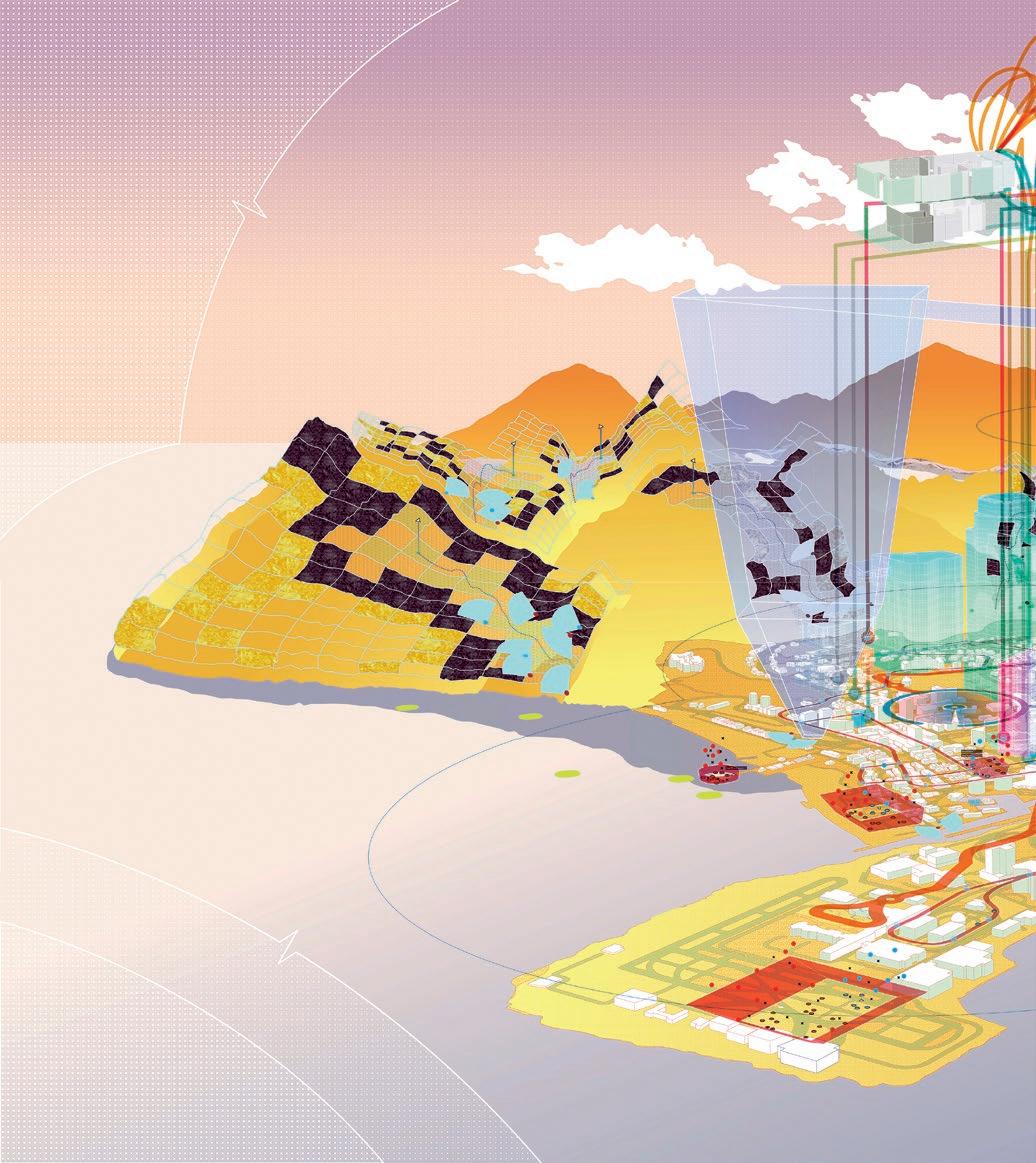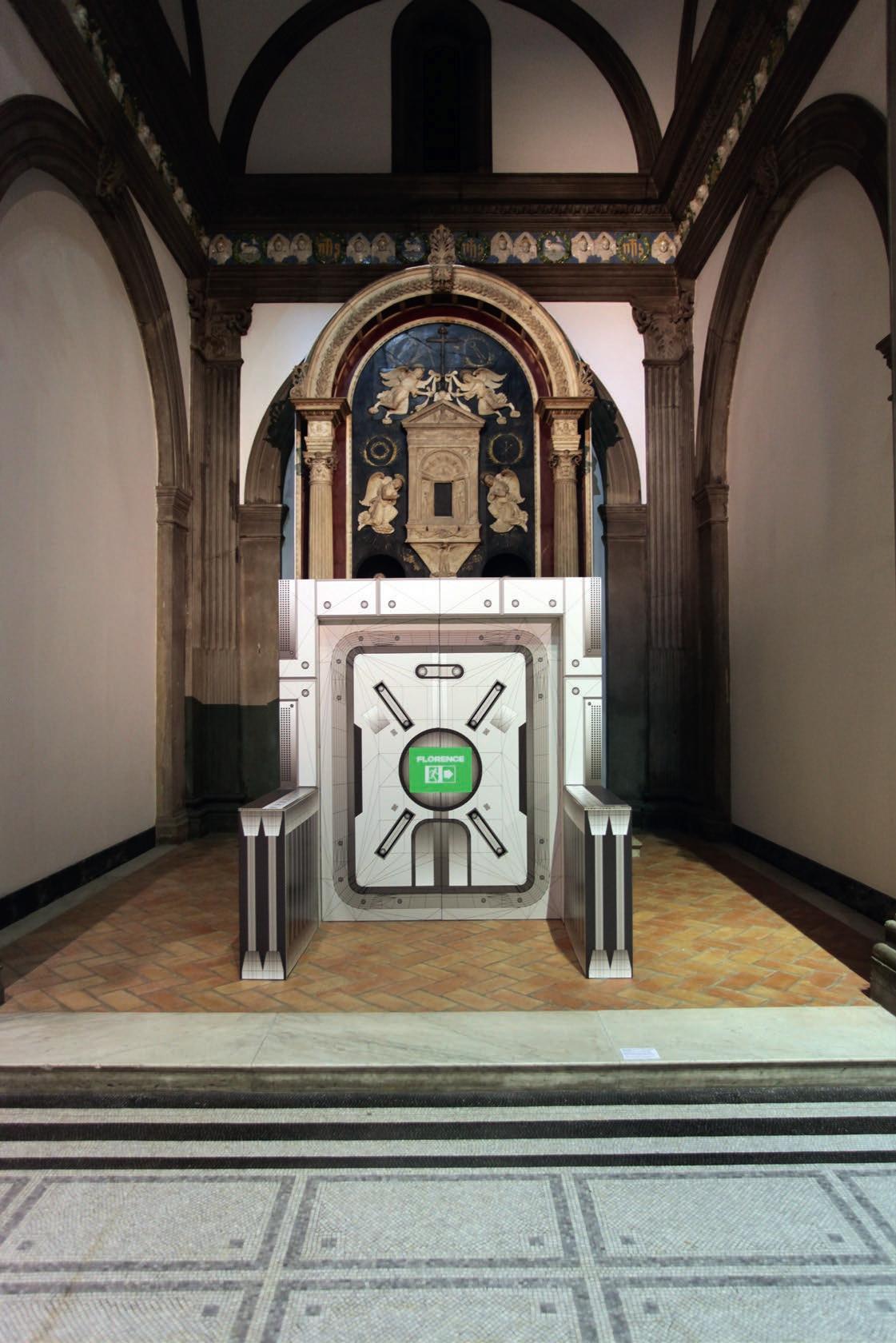
5 minute read
Context
The wider context for this research is one that encompasses architectural design research, contemporary games studies and media theory. Studies into the relationship between architecture and game spaces have generally come from a narrow subset of games studies literature, particularly the work of Steffen P. Walz and Michael Nitsche. Walz’s book Space Time Play: Computer Games, Architecture and Urbanism: The Next Level (2007) represents one of the first publications to explore this connection through a series of short essays covering various different architectural topics in relation to games. In Toward a Ludic Architecture: The Space of Play and Games (2010), Walz develops a more detailed reading of these relationships, positing questions about how architectural design might reflect the properties of games in its approach and intended effect. Nitsche’s work in Video Game Spaces: Image, Play and Structure in 3D Worlds (2008) is a thorough examination of game environments, where he argues for a critical analysis that reflects the ‘layered’ nature of game spaces, including the computational hardware running the game, the interface design and the social space in which it is played. Walz and Nitsche’s engagements are, however, predominantly textual, leaving open the question of how game worlds relate to architectural design practice.
In contrast, the ideas and methods behind Playing the Picturesque emerge from research by Pearson that attempts to address the relationship between game worlds and architecture through design projects. In order to outline the formal properties of in-game architecture, Pearson has developed a series of ‘virtual fieldwork’ methods that produce knowledge through the analysis of commercially available videogames. These methods are mainly predicated on structured play. For example, by using counterplay techniques – cheat codes to play against the rules of a game – Pearson developed a critical drawing project, Noclip World (2018), that analysed how many game worlds are built around the journey that a player’s avatar may take (10). By writing about this analytical method in journals such as Architectural Research Quarterly, Thresholds and Design Studies, Pearson explains how games can be understood in the context of architectural approaches towards perspective, viewpoints and circulation, relating closely to historical movements such as the Picturesque. This practice-led approach might be compared to that of artists such as Harun Farocki (Parallel I-IV, 2012–4) and JODI (Max Payne CHEATS ONLY, 2005), who use recordings of games to create ‘a space for exposing and questioning the peculiar trajectory of 3D videogames toward ever greater verisimilitude’ (Sharp 2015, p. 48).
Pearson’s research has developed into analytical design projects, such as Learning from Los Santos (2018), in which Pearson adopts methods including mapping, photographic recording, reconstructive modelling and data mining to reveal the architectural logic of game worlds (11–2).
10 Noclip World, drawings derived from screenshot photography, using cheat codes to break the game and reveal its environmental composition.

The title of this project is a reference to Robert Venturi, Denise Scott Brown and Steven Izenour’s book Learning from Las Vegas (1972). Their approach of ‘form analysis as design research’ has proven influential on Pearson’s research who also involves ‘screenshot’ photography to make typological studies of game worlds. Learning from Los Santos draws heavily on artist Ed Ruscha’s seminal series of small books on Los Angeles, and uses his ‘no-style’ photographic approach to emphasise situations such as cars in physically impossible positions that evidence the unreal nature of the game world. Pearson also uses community generated tools for game modification, ‘modding’, to data-mine the file structure of the game.
The analytical methods used in this research provide the basis for the development of projects that integrate both architectural and game design methods into the realisation of hybrid virtual/physical spaces. This type of work is more visible in art practice than architectural design, with two of the most influential approaches being the alternate-world games of Lawrence Lek (Nøtel 2018) and the game engine-based simulation pieces of Ian Cheng (Emissaries 2015–7). Both Lek and Cheng use the game object as a medium for building worlds exhibited in the context of art galleries.
11-2 Learning from Los Santos, analytical mapping drawings produced from analysis of Grand Theft Auto V, demonstrating the layers and systems of the game environment.


12
Pearson’s prior experience in realising gamebased projects has attempted to push this type of work towards architectural design practices. The Church of Colocation (2019) explores the re-purposing of empty religious buildings for housing digital infrastructure, while Projectives (2018) was a game designed to show players the principles behind Hans Vredeman de Vries’ historical studies into perspective by using multiple virtual cameras that converge together through player interaction (15). You+Pea’s Architecture (After Games) introduced a series of game-inspired structures into the V&A’s Medieval & Renaissance Galleries as a way of comparing how game spaces compress and distort architecture (13).
Using games studies theory as context allows Pearson to develop a nuanced position towards the interactivity and agency of games in an architectural setting. In the article ‘A Machine for Playing In: Exploring the Videogame as a Medium for Architectural Design’ (2020), published in Design Studies, Pearson stresses how virtual environments used in, for example, virtual reality representations of buildings are far more spatially normative than many interactive game worlds, despite both being built using the same software. This underlies the push to generate new hybridised forms of architectural design that incorporate the methods rather than only images generated from game development, resulting in architectural work designed to be realised through and in virtual game spaces.
The context for Playing the Picturesque came from studying a specific period of architectural history, the Picturesque ideal of design that emerged in the late eighteenth century. While the project is themed around notable Picturesque sites, such as Blaise Castle in Bristol and Prior Park in Bath, a key context for the work is the ideals and techniques of the aesthetic itself. Writings such as John Macarthur’s The Picturesque: Architecture, Disgust and Other Irregularities (2007) provided context for how Picturesque designers approached landscape, while the RIBA’s archives of drawings and photographs were used to source materials from which the follies and game worlds were built.
13 Architectural fragments taken from videogame worlds were placed into the V&A’s Medieval & Renaissance Galleries. These elements used existing exhibits as context to explore how game environments compress and extend space.


14
14 Screenshots of datamined research showing in-game structures from Grand Theft Auto V, used to understand the logic of virtual architecture built for game worlds.

15 A four-player game where players must work together to recompose some of Vredeman de Vries’ perspectival studies through four different camera views operating independently.





